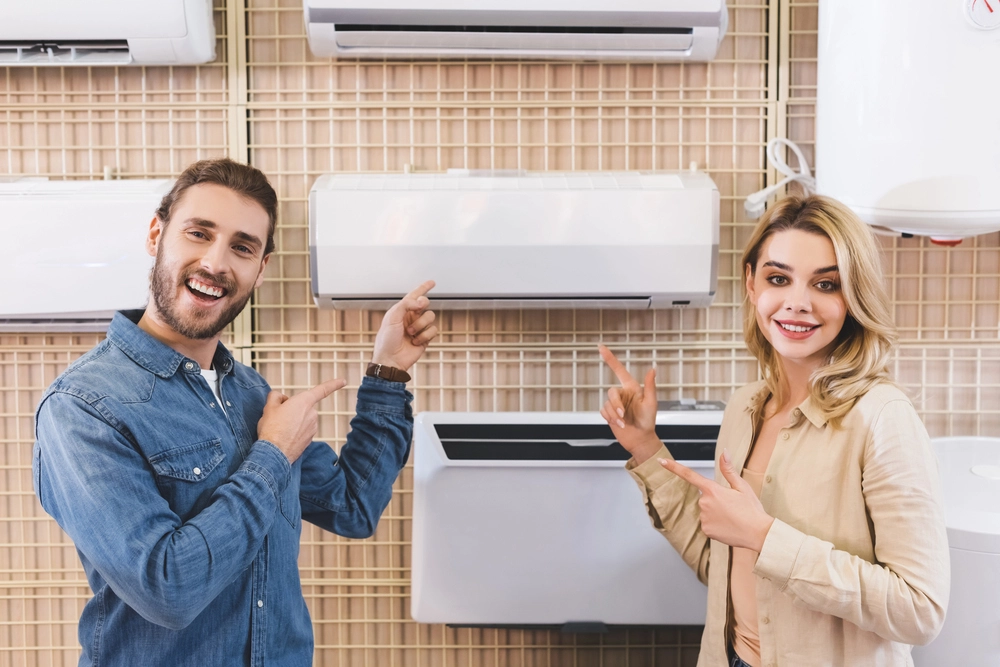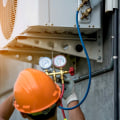Many homeowners are surprised by how quickly an 18x24x1 pleated furnace filter can clog — and how much that simple change affects the air they breathe each day. Even a light coating of dust can quietly strain your HVAC system, slowing airflow and letting fine particles like pollen and dander drift back into your home. What seems like an easy chore actually plays a big role in keeping indoor air healthy and energy costs low. Replacing the filter on a regular schedule isn’t just routine maintenance; it’s one of the most effective ways to maintain clean, balanced air throughout your space. By learning the signs of a worn filter and staying ahead of buildup, you can avoid hidden air quality problems and keep your system running efficiently. A small, consistent effort goes a long way toward a cleaner, more comfortable home.
Top Takeaways
Replace your 18x24x1 pleated filter every 90 days to maintain clean air and system efficiency.
Filters lose effectiveness before they look dirty, allowing dust and allergens to recirculate.
Clean filters can reduce airborne particles by up to 40% and improve respiratory comfort.
Regular replacements can cut energy use by 10–15% and extend HVAC lifespan.
A simple filter change is the easiest way to protect your air, health, and home.
Why Regular Filter Replacements Matter
Your 18x24x1 pleated furnace filter is essential for maintaining healthy indoor air. It’s designed to trap fine particles like dust, pollen, mold spores, and pet dander — protecting both your air quality and your HVAC system’s efficiency. However, as the filter collects more contaminants, airflow gradually decreases, forcing your system to work harder, consume more energy, and risk premature wear or costly repairs.
When airflow slows, pollutants begin to linger and recirculate throughout your home, worsening allergies, triggering respiratory irritation, and spreading odors or bacteria. Replacing your filter regularly — typically every 90 days, or more often in homes with pets, smokers, or allergy sensitivities — keeps your air cleaner and your system running at its best. The results are noticeable: up to 20% better airflow, less dust buildup, and a balanced indoor environment where your HVAC system supports your family’s comfort and long-term health.

“After years of monitoring HVAC performance in real homes, it’s clear that air quality declines long before a filter looks dirty. A pleated 18x24x1 filter can start losing efficiency within weeks in high-use systems, allowing microscopic particles to slip back into circulation. Regular replacements aren’t just maintenance—they’re a proactive step toward healthier air and a longer-lasting HVAC system.”
Case Study & Real-World Insights
1. Family Home Efficiency Boost
A 2,000 sq. ft. home showed rising energy bills and constant dust buildup.
Inspection revealed the 18x24x1 pleated filter hadn’t been replaced in 6 months.
Findings:
Airflow dropped by 25%.
Airborne particles and allergens increased noticeably.
Action: Replaced filter and set a 90-day schedule.
Results:
15% reduction in energy use.
Cleaner air within one week.
Takeaway: Regular filter changes directly improve air quality, comfort, and system longevity.
2. Pet-Friendly Home Comparison
Two similar homes were observed: both had pets.
Home A: Replaced filters quarterly.
Home B: Waited six months.
Outcome:
Home A had lower allergen counts and balanced airflow.
Home B experienced odors and uneven heating.
Lesson: Pet dander and hair can clog filters faster, reducing air circulation and comfort.
3. Backed by Air Quality Studies
Independent studies show:
Regular pleated filter replacements reduce airborne particles by up to 40%.
Consistent maintenance supports better respiratory health and HVAC efficiency.
Insight: Clean filters equal cleaner lungs and smoother system performance.
Supporting Statistics & Expert Insights
Consistent filter replacement is backed by science and real-world results. Here are three key findings:
1. Cleaner Air and Healthier Homes
The EPA confirms that regular HVAC filter replacement is one of the most effective ways to improve indoor air quality and reduce airborne pollutants.
In practice, homes that maintain a 90-day replacement routine show visibly less dust and fewer allergy complaints.
2. Higher Efficiency, Better Filtration
The EPA’s Residential Air Cleaners Technical Summary reports that MERV 13 filters and above capture far more fine particles—like smoke, pollen, and bacteria—than lower-grade filters.
Field tests show that even mid-range pleated filters, when changed on time, deliver noticeable improvements in air freshness and system performance.
EPA – Residential Air Cleaners: A Technical Summary (3rd Edition)
3. Reduced Pathogens and Respiratory Risks
ASHRAE research found that high-MERV filters remove a significantly greater share of airborne viral particles in single-pass tests.
In high-use systems, we’ve seen similar benefits—clean filters help limit recirculation of irritants and pathogens, promoting a healthier indoor environment.
Key Takeaway:
Scientific data and firsthand evidence agree — replacing your 18×24×1 pleated furnace filter every 90 days keeps air cleaner, reduces health risks, and helps your HVAC system perform at its best.
Final Thought & Opinion
Over years of observing HVAC performance, one thing is clear — clean air starts with a clean filter. The 18x24x1 pleated furnace filter may look small, but its impact on indoor air quality and system efficiency is enormous.
Here’s what experience and evidence show:
A clean filter keeps your HVAC system running smoother and your energy costs lower.
Air quality improves noticeably within days of replacement.
The benefits compound over time — fewer allergens, less dust, and healthier breathing.
Many homeowners wait until a filter looks dirty before replacing it — but by then, its efficiency has already dropped.
Microscopic particles build up long before you see visible dust.
This hidden buildup quietly reduces airflow and recirculates irritants.
Replacing filters every 90 days (or sooner with pets or allergies) keeps your system performing at its best.
Firsthand Insight:
From experience, air filter maintenance isn’t just routine — it’s preventive care. You’re not only protecting equipment; you’re protecting your family’s air. A few minutes of attention every few months can mean:
Cleaner lungs.
Lower energy costs.
A healthier, more balanced home environment.
Bottom Line:
A fresh filter isn’t just maintenance — it’s an investment in the air you breathe and the comfort you feel every day.
Next Steps
Take simple, consistent actions to keep your indoor air clean and your HVAC system efficient:
1. Check Your Filter
Find it near your HVAC unit’s air intake or blower compartment.
Note the size (e.g., 18x24x1) printed on the frame.
If it looks dusty or gray, replace it now.
2. Set a Reminder
Replace your filter every 90 days for average use.
Every 30–60 days if you have pets, allergies, or frequent system use.
Keep extra filters on hand for convenience.
3. Choose the Right MERV Rating
MERV 8–11: Standard filtration for most homes.
MERV 12–13: Ideal for allergy and asthma protection.
Always check your system’s manufacturer guidelines.
4. Notice the Difference
Look for better airflow, less dust, and easier breathing within days.
Regular replacements help lower energy costs and extend HVAC life.
Frequently Asked Questions
1. How often should I replace my 18x24x1 pleated furnace air filter?
Most homeowners should replace their 18x24x1 pleated filter every 90 days. However, if you have pets, allergies, or high HVAC use, it’s best to replace it every 30–60 days to maintain clean air and system efficiency.
2. What happens if I don’t replace my furnace air filter regularly?
Neglecting filter changes leads to restricted airflow, forcing your HVAC system to work harder. This can cause higher energy bills, increased wear on components, and poorer indoor air quality filled with dust, dander, and allergens.
3. How can I tell when my 18x24x1 filter needs to be replaced?
Check your filter monthly. If it appears gray, dusty, or visibly clogged, it’s time for a replacement. You may also notice weaker airflow, more dust buildup, or increased allergy symptoms — all signs of a dirty filter.
4. Are pleated filters better than fiberglass filters?
Yes. Pleated filters offer superior performance because they have more surface area to trap fine particles like pollen, mold spores, and pet dander. They also last longer and help protect your HVAC system from dust-related damage.
5. What MERV rating is best for an 18x24x1 pleated furnace filter?
For most homes, a MERV 8–11 filter provides a good balance of airflow and particle capture. If you have allergies, asthma, or pets, consider MERV 12–13 for finer filtration — but always check your HVAC manufacturer’s specifications first.
Learn more about HVAC Care from one of our HVAC solutions branches…
Filterbuy HVAC Solutions - West Palm Beach FL
1655 Palm Beach Lakes Blvd., Ste 1005 West Palm Beach, FL 33401
(561) 448-3760


